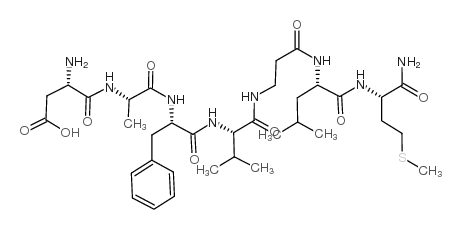| Structure | Name/CAS No. | Articles |
|---|---|---|
 |
(β-Ala8)-Neurokinin A (4-10)
CAS:127633-71-0 |
| Structure | Name/CAS No. | Articles |
|---|---|---|
 |
(β-Ala8)-Neurokinin A (4-10)
CAS:127633-71-0 |